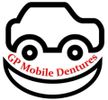Dental Insurance Coverage Info

We often get asked the question ‘do you direct bill to insurance companies?', the answer is YES!
Since dealing with insurance companies can be a cumbersome process, we do our best to help eliminate any stress or confusion that may occur from patients submitting dental claims themselves, so we do it for you! Of course, this does push the insurance burden onto our staff so the only request is that you please be a patient patient! (Love the English language…)
It’s important to note that not all insurance companies are set-up for electronic claim submissions. Generally, if the insurance company does accept electronic submissions then the process is faster. Some of the smaller insurance companies will only accept claims submitted by fax or mail, therefore delaying the processing times.
Certain insurance companies will also only communicate with the member and not with the dental office. So remember, if you receive any communication from your insurance that is requesting additional information for your dental treatment than you will need to relay this information onto the dental office. Of course this lack of open communication between the insurance company and the dental office presents problems as we are not always able to deal with claim matters directly with your insurance company. We will try to mitigate any issues that may arise when submitting dental claims to your insurance company(ies).
When a patient has more than one insurance, the patient will often assume 100% coverage. Although it may be true, sometimes the secondary insurance companies will only cover a specific portion of the remaining balance. This portion is determined by each insurance companies unique fee schedule and your dental plan. In other words, the fee schedules will vary between insurance companies and your plan may only cover a % of a specific dental procedure. There are also some procedure codes that are not covered at all, for example most insurances will not cover fees for Mobile services (house calls/hospital visits etc.) or dental implants. You are therefore likely to have out-of-pocket expenses for those types of services.
If you have any questions or need help understanding how your insurance coverage works then please ask us, we are willing to help!
Dental and Optical Assistance for Seniors Program (DASP)
This Alberta Government run program allows eligible seniors some dental coverage, the plan can cover up to $5000 maximum every 5 years. Patients on this program may assume they have 100% coverage as that is what’s often stated in the plans policy letter. With 100% coverage the patient thinks they will not have any out-of-pocket expenses for their denture related services. What patients don’t realize is that this program is subsidized, they have their own fee schedule that is significantly lower than the recommended Denturists Association Fee Guide and therefore only cover a portion of the total expenses. We understand it can be very misleading when the program states 100% coverage for up to $5000 and then the patient is still having to pay out-of-pocket expenses for dental treatment. This program also does not cover fees for mobile services, for example house call fees are not covered, but may allow some exceptions for Hospital and Institutional/Nursing home visits with a written letter of appeal. Pre-determinations can be submitted electronically, and their processing times are virtually instant for this program. Eligible patients will need to provide their Alberta Health Card Number and date of birth to their health care provider in order for them to submit pre-determinations electronically. If patients have the new Canadian Dental Care Plan (CDCP) than DASP coverage unfortunately will not combine.
Assured Income for the Severely Handicapped (AISH)
AISH is an Alberta government run program offering some dental health benefits to eligible Albertans that have a permanent medical condition which further prevents them from being able to earn a living. In a situation where a patient is enrolled in the AISH program but has dental coverage through another dental plan (cohabiting partner or dependant child) than that dental plan needs to be applied first before receiving any coverage through AISH (AISH becomes secondary insurance). Dental Health care providers accepting patients under the AISH program are subject to an agreement in which they may not balance bill above what is stipulated in the AISH program’s fee schedule. Therefore, many patients under the AISH program do receive full coverage for certain dental treatments. If patients have the new Canadian Dental Care Plan (CDCP) than it is the primary coverage and unfortunately this coverage is not in combination with coverage from AISH so patients may need to pay some out of pocket expenses in that scenario.
Non-Insured Health Benefits (NIHB)
NIHB is a federally funded government run program in which eligible First Nations and Inuit clients may receive some dental coverage. Pre-determinations can be submitted on the patient’s behalf. Eligible patients will need to provide their Client identification number or Band number and family number along with their date of birth for pre-determination submissions. NIHB does not accept electronic pre-determinations so they will need to be mailed which delays processing times. If a patient that is enrolled in the NIHB program has another dental plan than claims must be submitted to the alternate plan or program first prior to submitting any dental claim to NIHB (they are secondary coverage). This is a subsidized program so patients that are enrolled in the program may have some out-of-pocket expenses.
Canadian Dental Care Plan (CDCP)
This is a new Federal Government Plan in which patients began their enrollment beginning in May 2024. Patients with this plan need to know they will likely have out-of-pocket expenes as coverage is not being combined with current provincial government programs. This Plan is often the primary insurer with the exception of its members having private dental insurance through a company or spouse for example.
GP Mobile Denture Services Ltd

Copyright © 2018 GP Mobile Denture Services Ltd. - All Rights Reserved.